Figuring Out If 'Opportunity Zones' Can Revitalize Struggling Neighborhoods
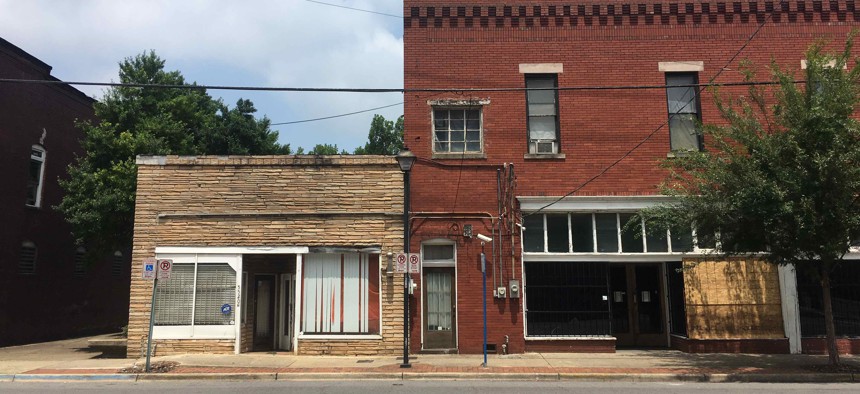
Commercial real estate on First Avenue North in Birmingham's Woodlawn neighborhood. Bill Lucia/Route Fifty
In two Alabama cities, those laying groundwork for the new tax incentive program see both promise and risks in the investments it could spur.
BIRMINGHAM, Ala. — Boarded-up houses and vacant storefronts dot the streets of Woodlawn.
They’re are a reminder of the uphill economic battle the community is fighting, and of its history as a place that had a freeway carved through it, and that saw white families move away in the years after school desegregation began in Alabama in the 1960s. The neighborhood is also located in a county that underwent one of the biggest municipal bankruptcies in U.S. history.
But Perry Macon, pastor at the First Baptist Church of Woodlawn, warns against portraying the neighborhood in too harsh a light. "As you drive through, you will see some deterioration in housing and business. But see, in my mind, I wouldn't see that as a negative,” he said.
“I'd see that as an opportunity to grow. An opportunity to develop,” Macon added.
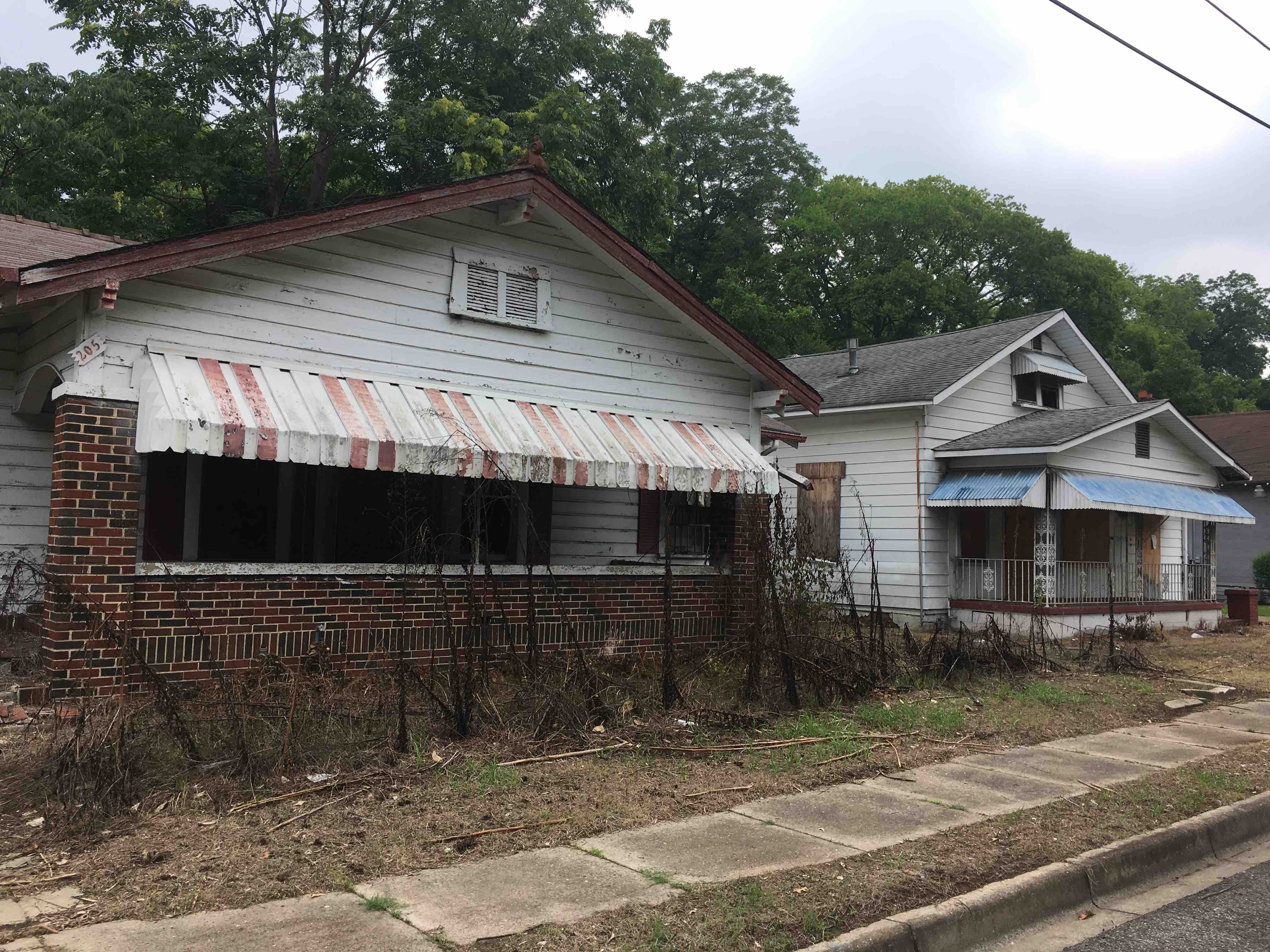
New housing and businesses are popping up in the area, not far from Birmingham’s booming downtown. At the same time, around 40 percent of the roughly 2,300 residents in a census tract that overlaps much of Woodlawn lived in poverty during recent years, federal estimates show.
Earlier this year, that census tract became one of the areas in Birmingham included in the Opportunity Zones program, the economic development initiative that was created as part of the federal tax overhaul that President Trump signed into law in December.
Sally Mackin is executive director of the Woodlawn Foundation, a nonprofit involved in a variety of revitalization efforts. She said the group “worked frantically” to make sure Woodlawn was included as one of Alabama’s Opportunity Zones.
“It could be great tool,” Mackin said. But she also cautioned that “we don’t want it to just be this, like, Wild West of people coming and haphazardly doing things just to make money.”
“I think if you don’t have people paying attention, that it could go very, very bad,” she added. “It could go poorly for existing residents just because of potential displacement.”
Uncharted Terrain
The Opportunity Zones program provides tax breaks for people and corporations that funnel capital gains, from investments such as stocks or hedge funds, into “Opportunity Funds.”
These funds are supposed to be used to make investments in economically distressed census tracts designated as zones. Governors around the U.S. chose the zones and the Treasury Department and the Internal Revenue Service finished certifying their selections in June.
There are now about 8,700 census tracts, in all 50 states, with nearly 35 million residents, eligible for the program.
Boosters of Opportunity Zones say there’s upwards of $6 trillion in unrealized capital gains available to fuel the program, predicting it could evolve into one of the nation’s biggest economic development initiatives. For now, however, it remains unclear how much investment it will spur.
There are also concerns, like those Mackin raised, about whether the zones will accelerate gentrification in certain areas, forcing out the very people and businesses that its creators say it could help. Or whether it will subsidize projects that would have happened without special tax incentives and leave other struggling neighborhoods behind.
Meanwhile, state and city governments will be entering into uncharted territory as they look for ways to work with private investors on a program that is both untested and highly flexible. Route Fifty spent time last month in two Alabama cities, Birmingham and Huntsville, that are starting to work on the program, but still figuring out exactly what it could mean for them.
‘Screaming for Capital’
Woodlawn was an independent municipality before the city of Birmingham annexed it in 1910. It’s about four miles northeast of City Hall and in its early days was an agricultural community.
Railroad tracks skirt the neighborhood’s southern edge, while Interstates 59 and 20 snake through nearer to its center. In the main census tract that encompasses the community, certified as a zone, about 62 percent of residents are black or African American and 24 percent are Hispanic or Latino, according to the Census Bureau.
Mackin notes that prior to desegregation Woodlawn was, not “just a white community, or just a black community.” In Birmingham, at that time, “that was pretty unique.”
She highlights successes her group and others have had in recent years in Woodlawn. For instance, there are 12 newly built cottage-style homes the foundation helped to develop on 59th Street South, which sold for market rate prices in the $187,000 to $240,000 range.
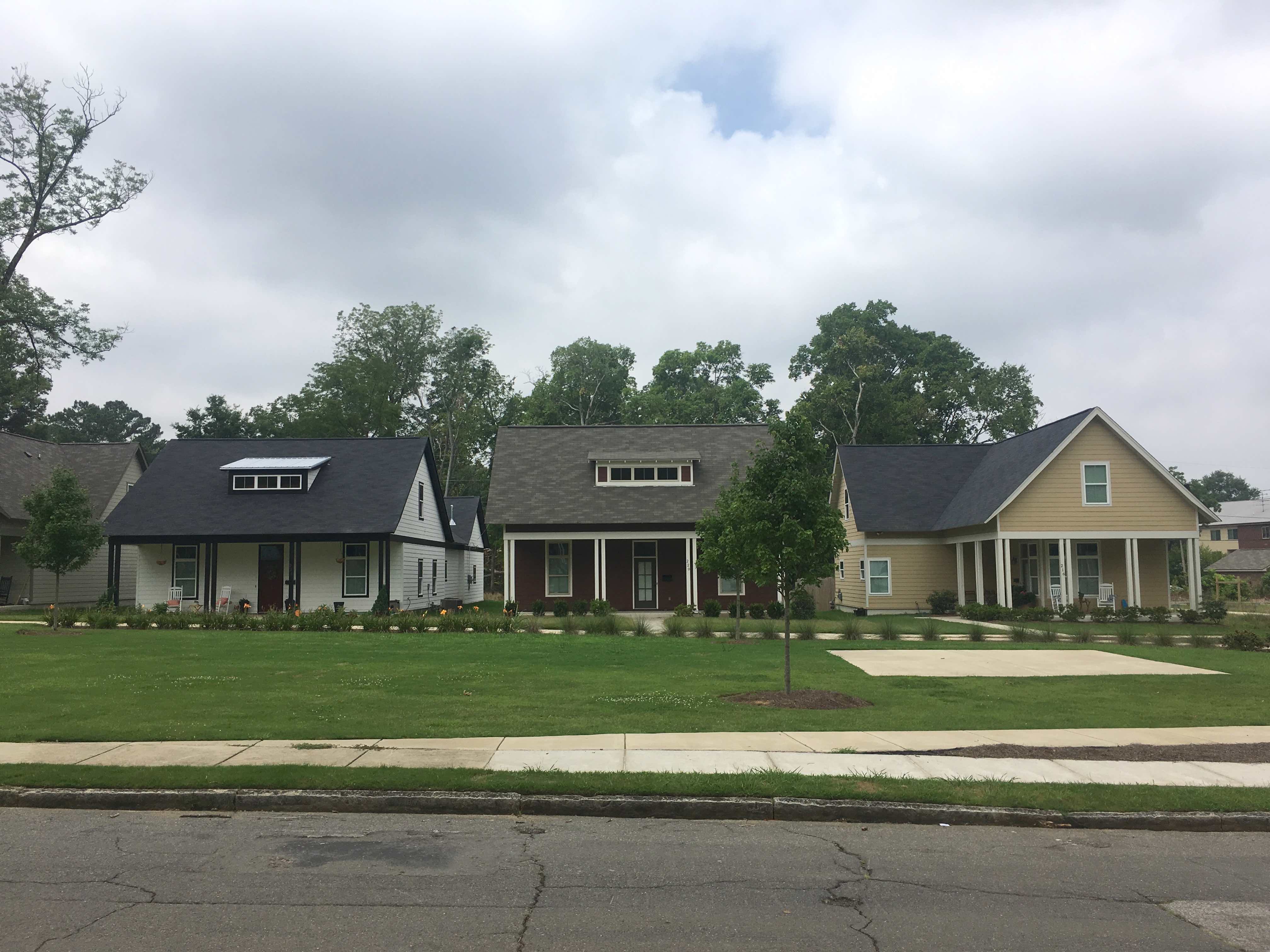
With those houses sold, Mackin said the foundation is working with a private firm to redevelop empty houses and residential lots one street over on 59th Place South. “We’ve established a market,” she said. “The banks are willing to take the risk because we’ve proven that it can work.”
Across Georgia Road, less than a quarter mile from the newly built homes, is the foundation’s first foray into affordable housing, built to fit in with the neighborhood’s existing architecture. “We didn’t want to just fly in a 64-unit, huge apartment complex,” Mackin said.
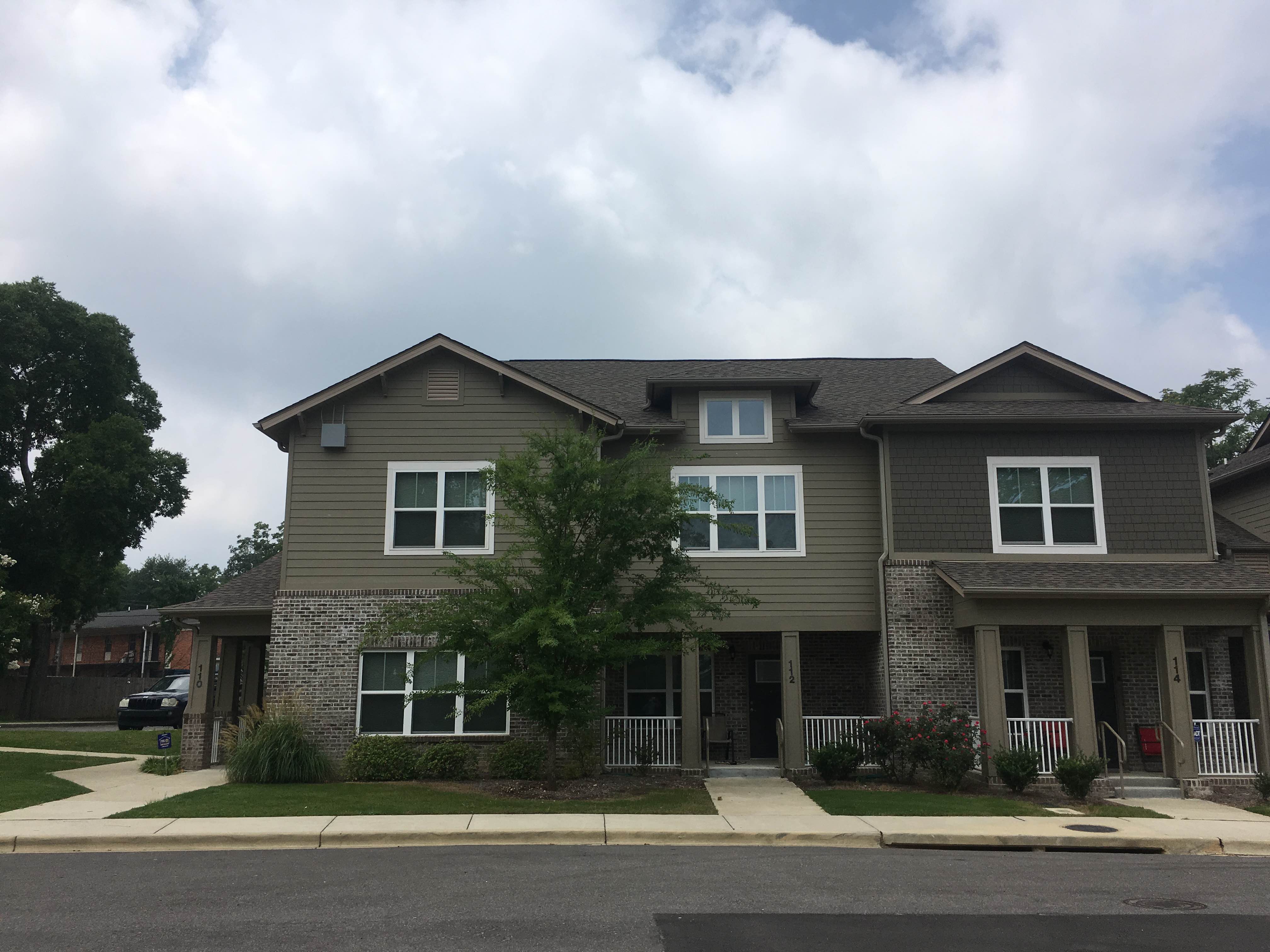
Macon, the pastor, said the neighborhood needs more affordable housing. While he was largely supportive of the foundation’s market-rate development, he noted it also raises concerns that new homeowners moving in could "take the community away from people that previously had ownership."
Elsewhere in Woodlawn, the foundation helped renovate a former bank branch into an early learning center, and also fought in court to get control of a building that Mackin said was occupied by a vehicle title loan operation. Now there are three food businesses there.
One of the businesses is a casual restaurant that offers a breakfast menu, and food like sandwiches and burgers. Tony Bayles opened the restaurant and also runs a catering company. He believes that Woodlawn is a smart place to invest. “I really do,” he said.
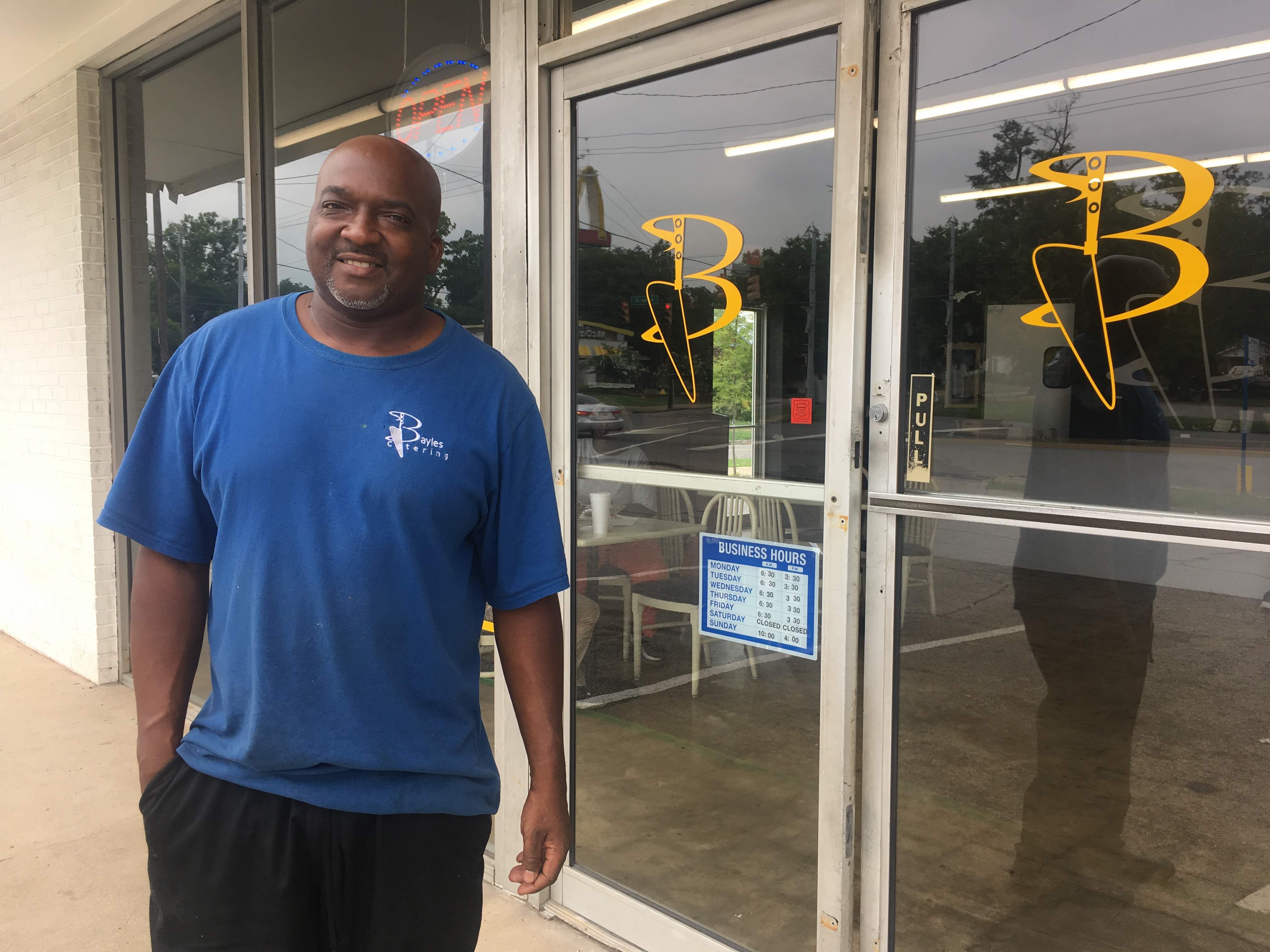
“It’s a few minutes from the downtown area,” Bayles added, noting that people in the community are looking for places that they can walk to for a bite to eat, or to shop.
Mackin gestured toward some of the available commercial space as she drove along First Avenue North.
“It’s just screaming for capital to come in,” she said.
Local Leadership
For state and local leaders keen on making good use of the Opportunity Zones program, or helping to guide investments that it might drive, experts say that now is the time for action.
They also note that dollars will not automatically flow to a place just because it’s a zone and communities with zones could actually end up competing with one another. City and county officials might need to play a pivotal role drawing attention to potential investments.
Steve Glickman, CEO of Economic Innovation Group, an organization that has championed the program, said a frequent question he hears from potential Opportunity Fund investors is: “Where should we be going?’”
“The most basic thing is you have to understand what’s actually in the zones,” he added, when asked about steps local government officials should be taking to prep for the program’s ramp-up. “What kind of assets do you have there that are investable?”
Startup companies, housing, and energy infrastructure, like wind turbines and solar installations, are all examples of investments Opportunity Funds might eventually pump money to. Banks, “impact investors,” and local governments are among those looking to set up funds.
A key goal with the program is to draw investment to businesses and entrepreneurs that lack access to venture capital or bank lending, Ja'Ron Smith, a special assistant to the president, in the White House Office of Legislative Affairs, told county officials last month.
“It’s going to be extremely important for you to work with some of those local businesses that are looking to grow and get resources connected to the people that have the capital,” he said.
158 Zones
Josh Carpenter, economic development director for Birmingham Mayor Randall Woodfin, recalled how, shortly after the Opportunity Zones program became law, the mayor’s office sought to identify areas that are both ripe for investment and struggling economically.

This involved assessing poverty rates and indexing “community and economic development assets,” particularly colleges, and the University of Alabama at Birmingham, which alone employed about 23,000 people in 2017. Other examples of assets included co-working spaces, business districts, and “incubators” for tech companies and advanced manufacturing.
They eventually sent a proposal to Gov. Kay Ivey, a Republican, that identified about 47 promising zones. Ivey had the authority to select 158 zones for the program.
She chose to designate one in each of the state’s 67 counties, meaning there were 91 that were effectively discretionary. Of those, Birmingham secured 24. The zones cover 77 of the city’s 99 neighborhoods, Carpenter said, and include census tracts with poverty rates ranging from 19 percent to 70 percent.
The city is now moving ahead with an effort to come up with its own fund that will be able to make investments in the zones, and taking other steps to lay groundwork for the program.
Northern Alabama
About 100 miles away in northern Alabama, Huntsville, a city of about 194,000 people, is known for its bustling aerospace industry and its history in the nation’s missile and rocket programs—including work that took place there that helped land U.S. astronauts on the moon.

Redstone Arsenal, a hub for the military and NASA, has around 30,000 to 40,000 employees. Nearby Cummings Research Park is home to nearly 300 companies with over 26,000 workers.
The median household income in the city is about $51,400, which is higher than the state figure for Alabama of $44,700. But there are parts of town where people are struggling.
In Madison County, where Huntsville is located, there are 10 certified Opportunity Zones, most of them clustered in and around the city and some overlapping with land owned by Alabama A&M University, a historically black university in the north part of town.
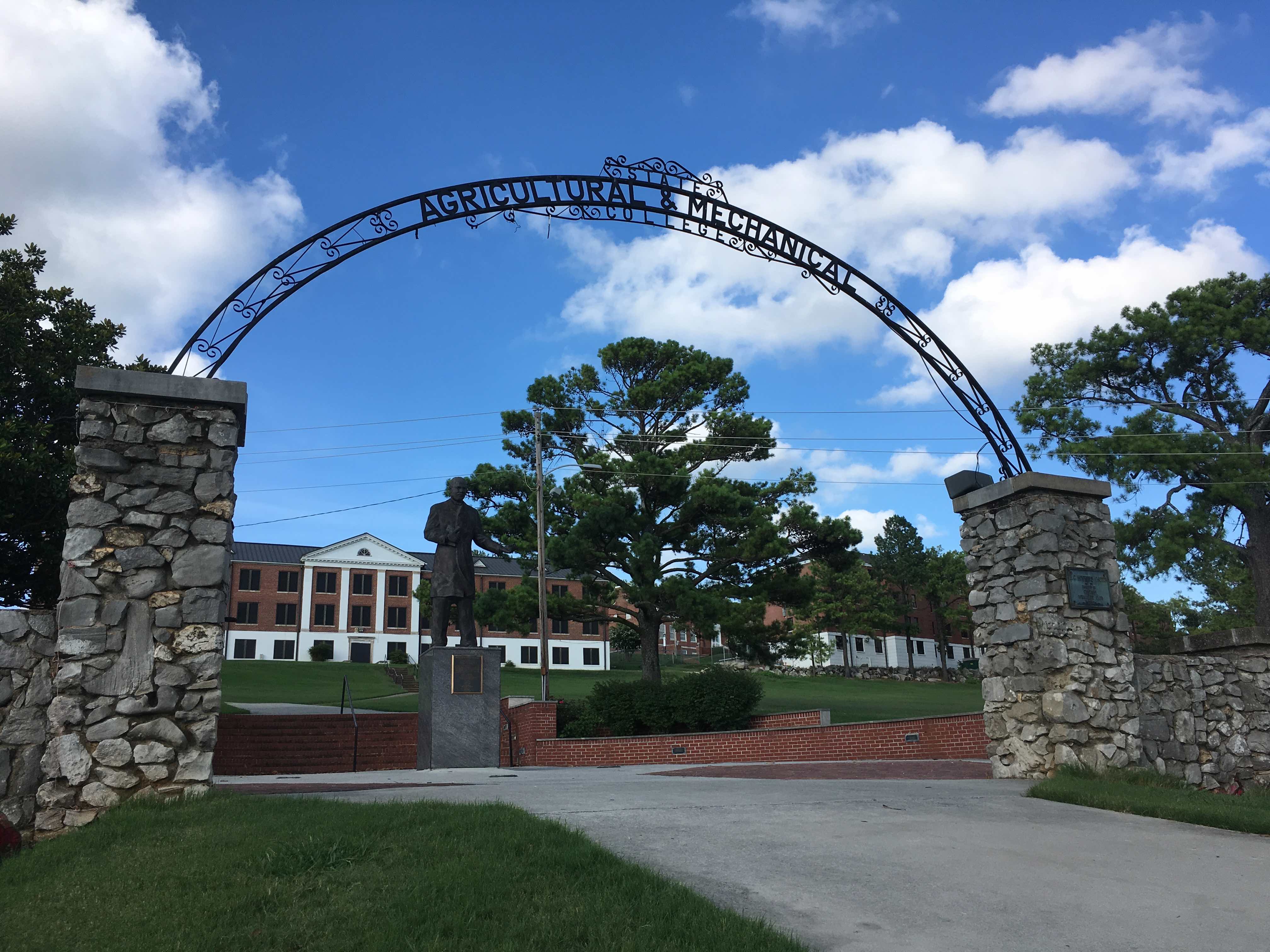
Three census tracts that are zones in the area where the university is located had poverty rates in recent years ranging from 39 percent to 46 percent, according to Census Bureau estimates.
“We’ve got some pretty concerning numbers when it comes to income levels and poverty,” said Del Smith, the dean of the school’s College of Business and Public Affairs. He worked previously as an economic development official for the city of Rochester, New York.
Smith is currently helping spearhead an effort to solicit developers for a plot of grassy land adjacent to A&M’s football stadium parking lot, along Memorial Parkway, a busy north-south corridor. The tentative vision is that the space could serve as a site for a hotel and conference center, but Smith said the university is also open to hearing other ideas from developers.
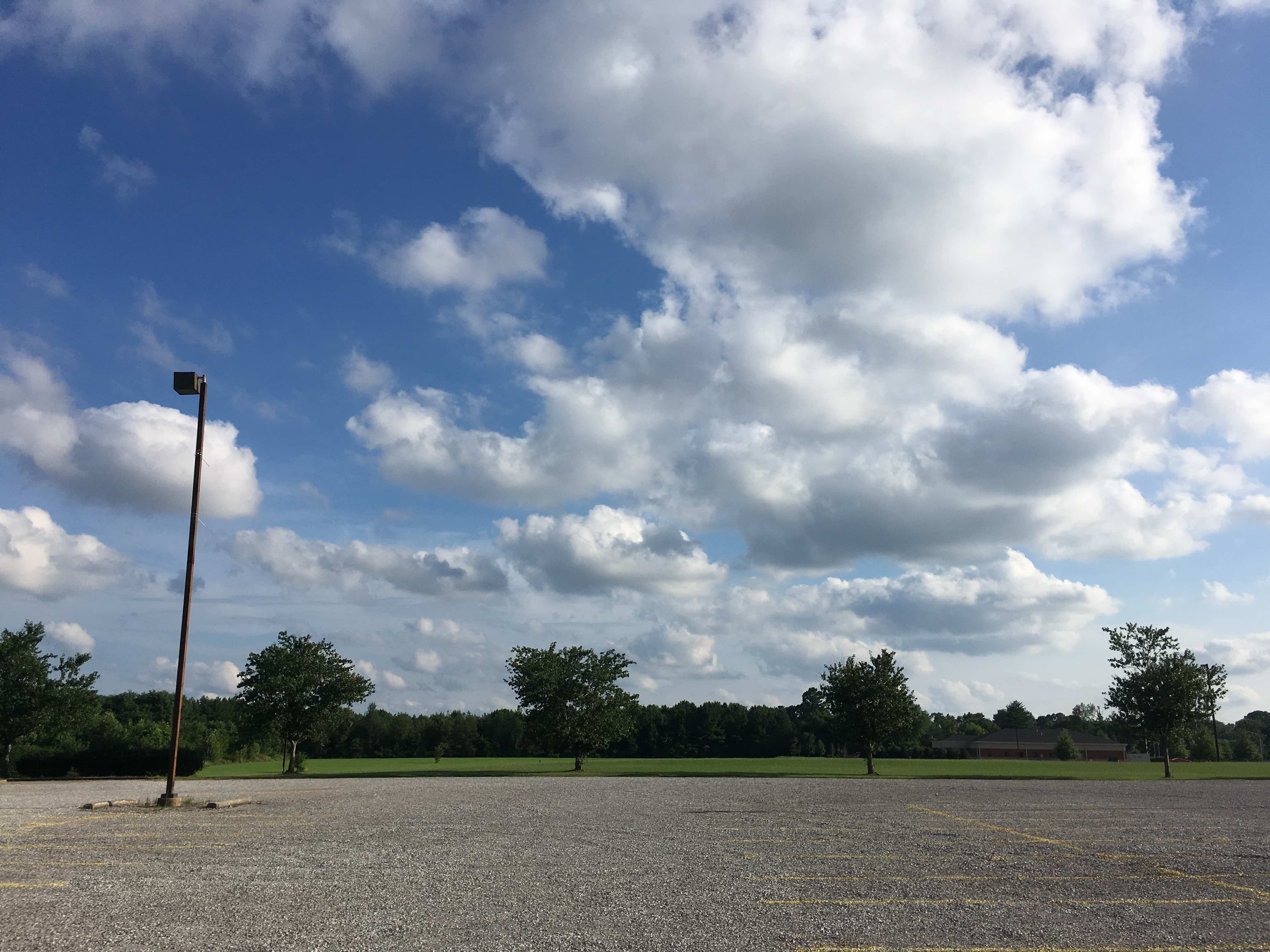
He acknowledged that a construction project and real estate deal will not automatically benefit low-income residents in North Huntsville.
But he does see possibilities for connecting people in the community with new development that could occur. For instance, getting people trained to work in construction, or jobs at any establishments that get built, contracting with companies based in the area, or carving out low-cost space for local small businesses in new buildings.
“If it’s not strategic,” he said, “you’re going to have this potential hotel and convention center where people are driving in from 10 miles away, from Madison, to either build or operate, and it’s not going to have the significant economic impact.” Smith added: “It has to be really intentional.”
‘Every Community Is Unique’
As of mid-July, Harrison Diamond, business relations officer for Huntsville, wasn’t entirely sure yet how the city might approach Opportunity Zones outside of the one where Alabama A&M hoped to build the hotel and conference center. Although the university is taking the lead on it, he said the city could possibly assist with things such as street and utility work.
“I’m not quite certain a lot of people that do development were even tracking this,” Diamond said. “I think building awareness is going to be key.”
Representatives with PNC, the bank and financial services company, had met with him and others in Huntsville about the company’s Opportunity Fund program.
Dan DeMoss, tax director for the PNC corporate tax department, said by email last week that the company established its own Opportunity Fund in June to invest in qualified projects throughout the U.S. The fund is for PNC gains only and not open for public investment.
PNC started making investments through the fund in July and, according to DeMoss, it will continue to do so in areas like community development banking, affordable housing and equipment finance. It has not made investments yet in Alabama.
“We are actively looking to fund shovel-ready projects from public, government and community agencies,” DeMoss added.
Diamond grew up in Huntsville and worked previously for the local Chamber of Commerce. He talks excitedly about the new businesses that have cropped up around the city in recent years.
One new project is the demolition of Madison Square Mall, which opened in 1984, to make way for MidCity—a $350 million undertaking, on a 100-acre site. MidCity is slated to feature “amenity-rich” residential units, a boutique hotel, 350,000 square-feet of retail, office space, a rock climbing gym and a golf venue. The site is located in an Opportunity Zone.
“MidCity is, I think, it’s one of the largest construction projects, or developments, in the southeastern United States right now,” Diamond said. He wasn’t certain if the developers would seek to take advantage of the tax incentive program, given that it could complicate the project.
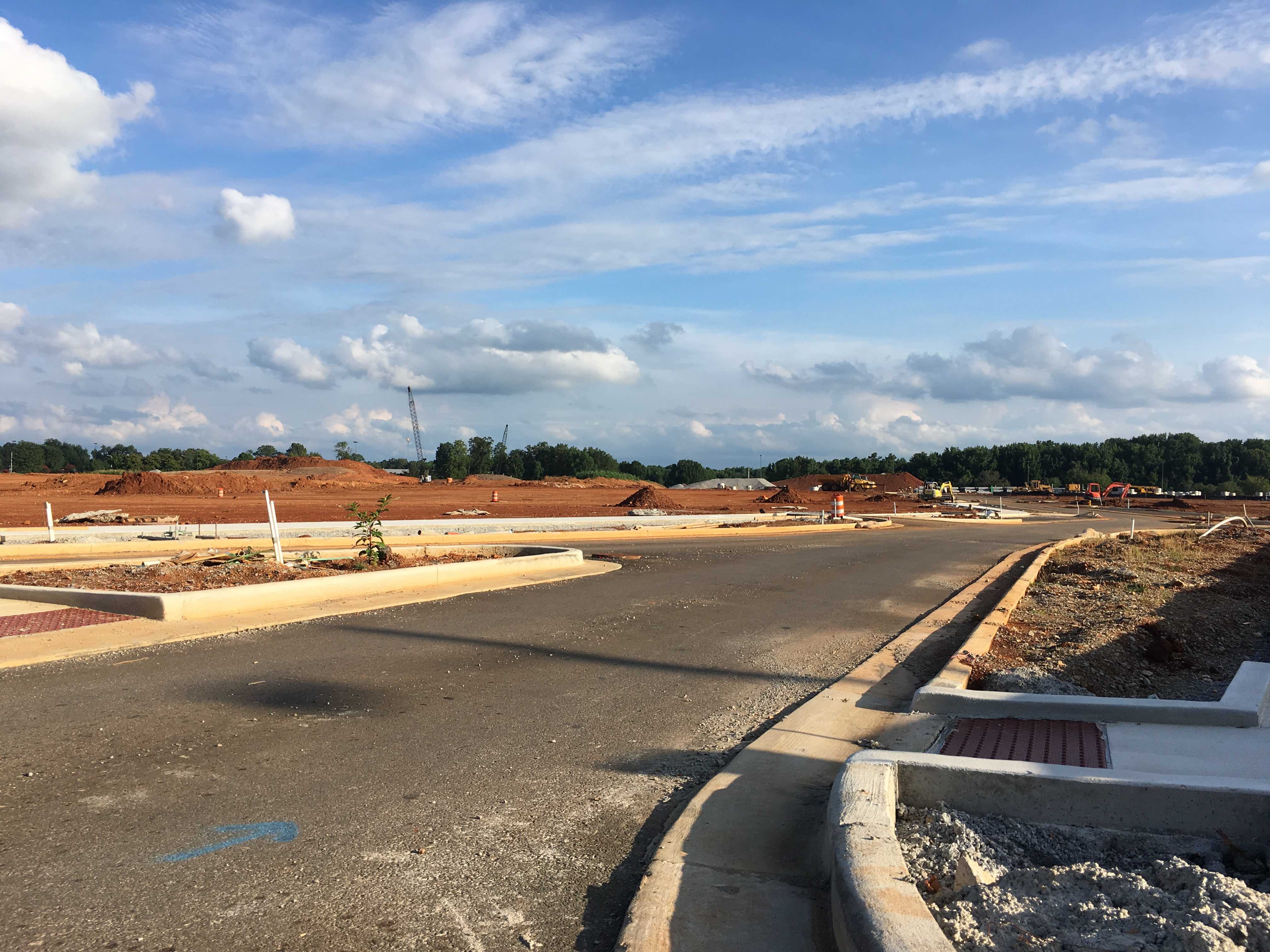
Route Fifty asked Diamond for his thoughts on how an area like the one around MidCity—which is along a busy commercial strip with stores like Best Buy and Chipotle—aligned with the notion that Opportunity Zones would provide support for smaller businesses, and revitalize poor communities.
“I can show you some really struggling neighborhoods around here and you see why the designation was given,” he said. “I think every community is unique.”
Mary Ellen Judah, executive director of the Huntsville-based nonprofit, Neighborhood Concepts, Inc., said she sees ways the program could help boost small businesses and affordable housing, in line with work her organization has been doing for years.
The group initially focused on development of affordable housing, expanding into lending around 2015, when it became certified as a Community Development Financial Institution, or CDFI, by the Treasury Department. CDFIs can provide a range of financial services.
As a CDFI, Neighborhood Concepts could set up its own Opportunity Fund. But Judah said she hadn’t really considered doing that. “Primarily because we’re so small,” she explained.
One of Neighborhood Concepts’ niches with its loan fund is lending to food-related businesses, such as food trucks, kombucha-makers or, in one client’s case, a cornbread muffin business.
“It’s so hard to get that type of financing from a bank,” Judah noted.
She raised the possibility of combining Opportunity Zone capital with a tax credit program for affordable housing, as there is often a gap pulling together financing for affordable housing projects. The program could also prove useful for small commercial enterprises, she said.
An idea she has is for building out a commercial kitchen in a low-income area that budding food businesses could use to prepare their products, while also using the space to train and employ local workers.
One company might come in on Tuesday to bottle pickles, another on Thursday to prepare jam. “We could create steady work,” she said. “There are some vacant buildings in North Huntsville that I think would be great for something like that.”
Birmingham’s Fund
As of mid-July, Birmingham was still in the early stages of setting up its Opportunity Fund. Carpenter said then it wasn’t clear how investors would be invited to participate in it, or how much money the city will attempt to raise. As for what investments the fund might be used to make, he mentioned housing, or grocery stores in areas without them, as two possibilities.
The city, he said, would also look to link Opportunity Zones with other initiatives, such as business loan programs and a land bank.
There are plans for a “community investment board” and an “investment advisory board” to guide the fund’s investments. Non-city Opportunity Funds would still be able to invest in any of Birmingham’s zones. “We’re encouraging other investors to set up funds,” Carpenter said.
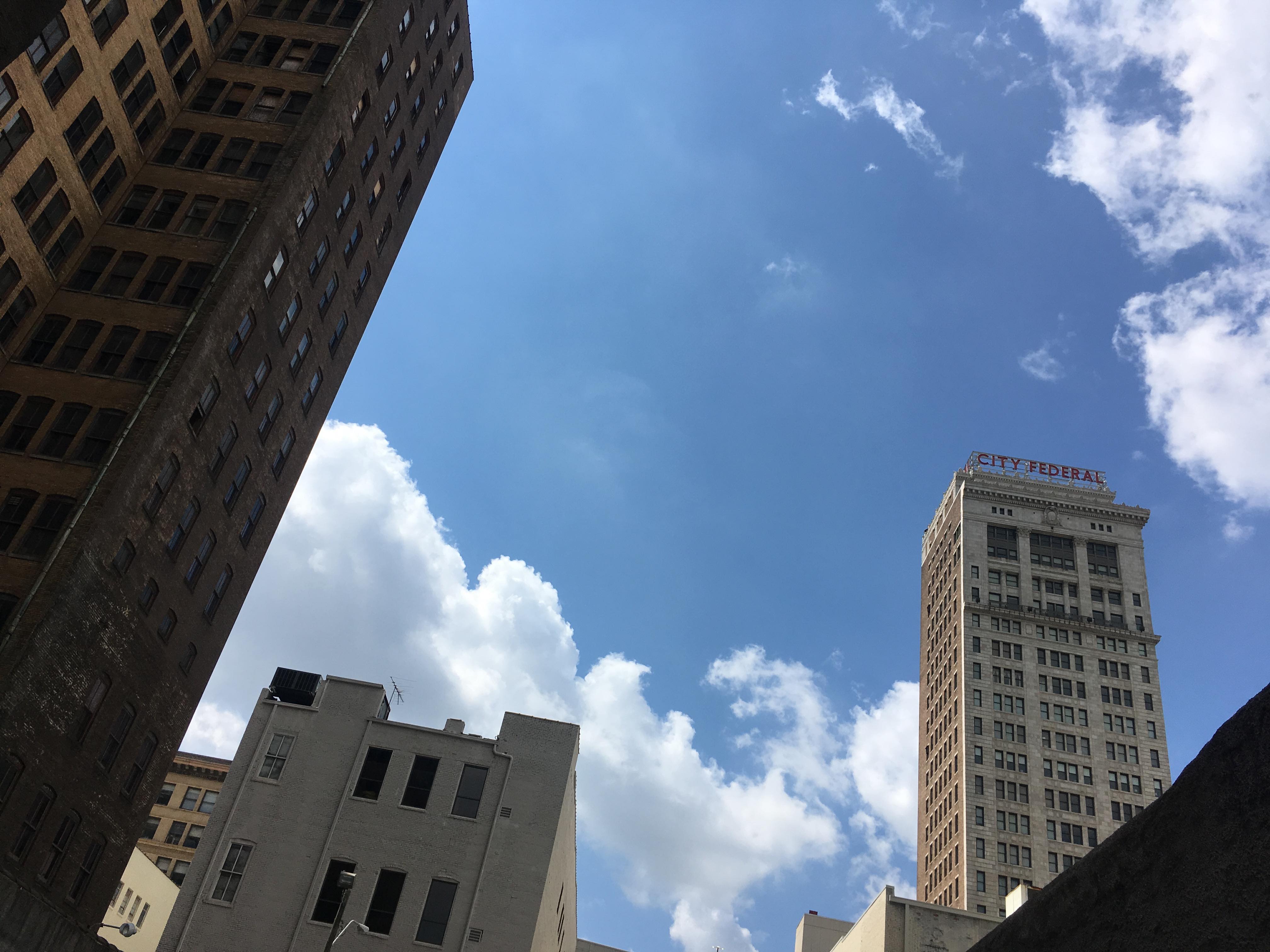
He explained that he doesn’t see the “highest and best” use for the city-led fund in downtown areas where “there’s cranes everywhere,” and a peppy real estate market. “There are some outstanding areas that are really untouched right now,” Carpenter said, pointing to the Civil Rights District with its four new national monuments as one of them.
Rooftops and Grocery Stores
Councilman John Hilliard represents Birmingham City Council District 9, which includes neighborhoods west of City Hall, like Pratt City, Wylam, North Birmingham, and Ensley. In many parts of the district, the councilman said during a recent interview at his office, “the income level is very broken and poor.”
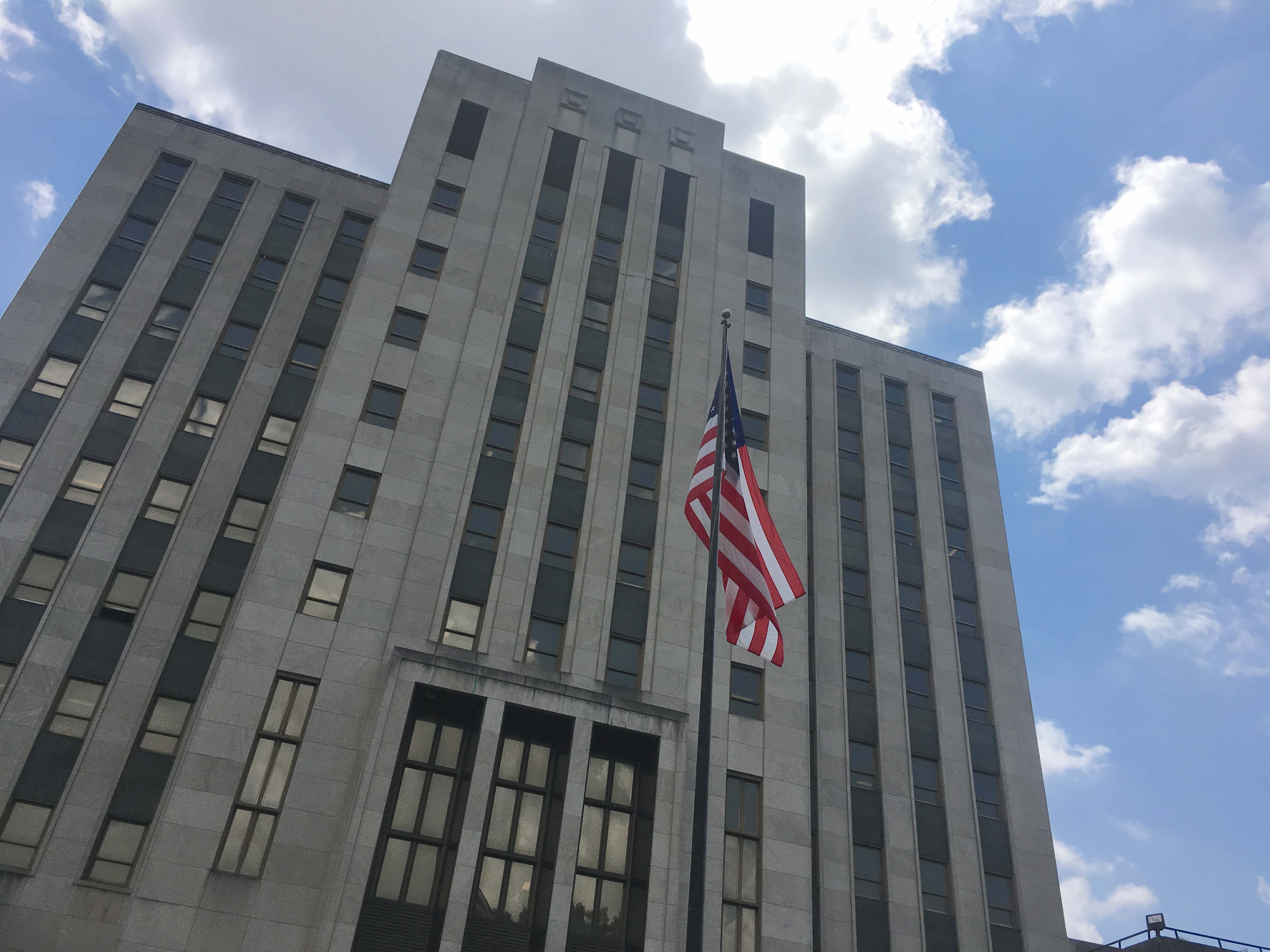
Hilliard is a lifelong resident of Birmingham and can trace his family’s heritage there back to 1896. Previously he served in the state legislature for about a decade, through 2002, then spent 16 years working in the private sector—in real estate, and for a charter school association—before he decided to run for City Council in 2017.
When it comes to understanding why communities like some of those in his district are lagging economically today, Hilliard says it’s necessary to look to the city’s past and the discriminatory policies that were in place at one time affecting everything from schools to housing.
“Think about the years that the banks didn’t loan to those areas,” he said. Heavy industry in North Birmingham left parts of that neighborhood badly polluted. “Who would invest?”
Hilliard, who also chairs the council’s Economic Development Committee, said he’s hoping the Opportunity Zones program will attract some new businesses to his area, and possibly help to improve the housing that’s available there.
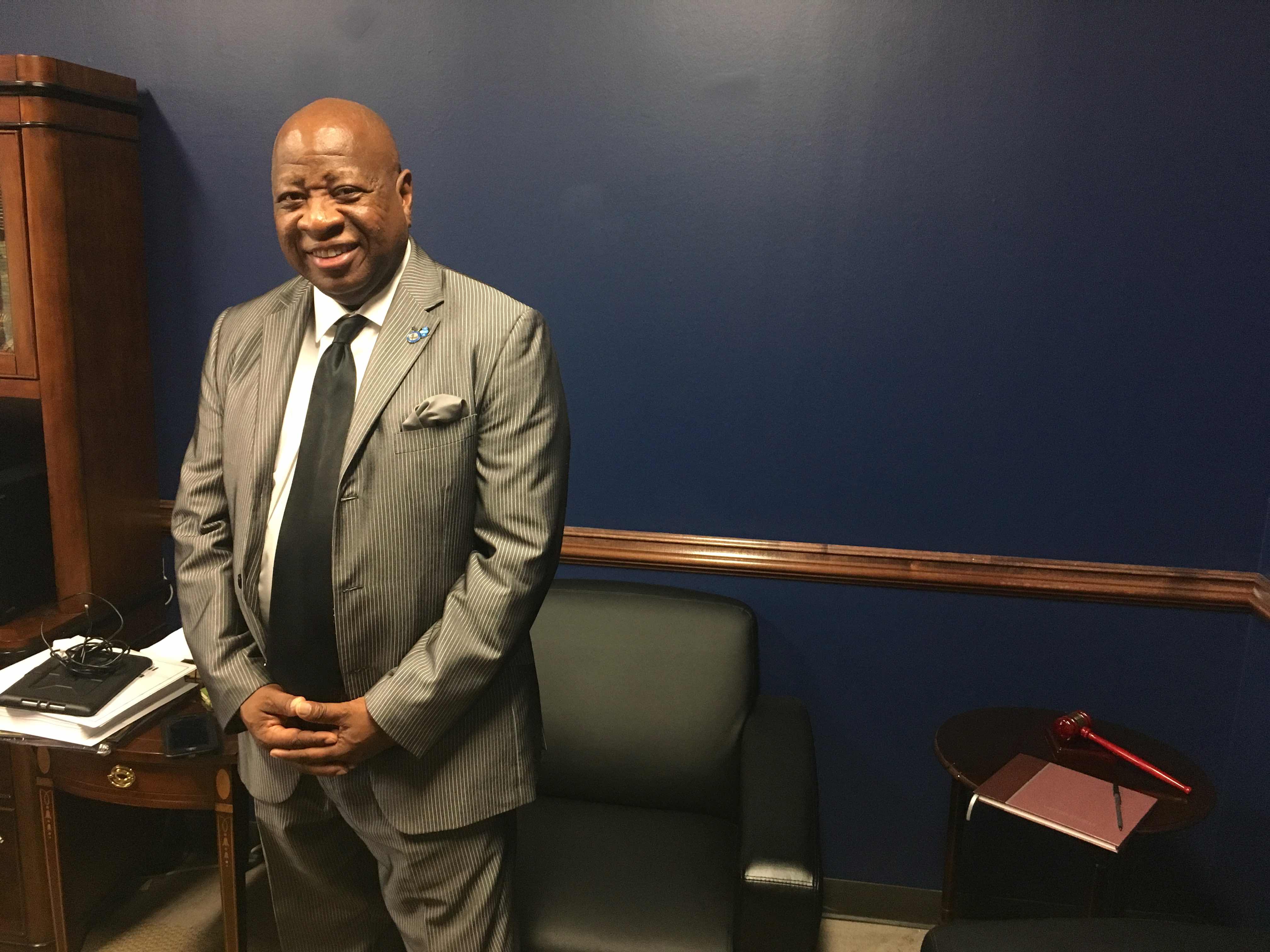
“We need more rooftops,” he said. “We need more grocery stores.” But there’s one aspect of the program that he’s disappointed by: the zones in Birmingham do not cover Ensley, a main commercial area in his district. Hilliard said he believes it “could have sprung up overnight.”
One of the properties he described in the area is a vacant 10-story building.
“I just don’t know how we got left out,” he said. The explanation the councilman has heard from the mayor’s office was that the neighborhood was excluded due to an error.
Carpenter, in an email this week, blamed a “clerical error” for the commercial tract getting left out.
He said the city asked for the Ensley Commercial Business District to be included as an Opportunity Zone in the original proposal it sent to the governor, and made the same request in a follow-up letter to Ivey’s office after the state had sent in its submission to the feds.
Mike Presley, a spokesman for the Alabama Department of Economic and Community Affairs, the lead agency in the state for Opportunity Zones, said after looking into what happened with Ensley over the course of a day last week, he was “not aware” of any error.
He said that the state did have a chance to request changes to the zones earlier this year but said it elected not to do so, because it would have delayed federal approval of Alabama’s nominations “and would have opened the floodgates for suggested revisions.”
‘So Many Deals Lined Up’
Ensley aside, Hilliard said there’s still interest among developers in how they can capitalize on the program in his district. He called one of them, Omar Harvill, a managing member and owner of Positive Development, LLC, and put him on speaker phone.
“I see opportunities, I mean, I’ve got them all day long. From downtown to all over District 9, all over the city, all over the Opportunity Zones,” Harvill said. He said that he’s looking at 190-unit residential project now in a zone. It’s empty right now, he said.
Harvill said there about 40 projects in zones that he’s eyeing. With the 190-unit project, he thinks he can probably pay $15,000 per-unit, put in $15,000 per-unit to upgrade plumbing, electricity and other features and try to sell apartments in the ballpark of $40,000 to $50,000.
After Hilliard hung up the phone with Harvill he said that if what the developer was discussing “actually happened on a larger scale, it would revolutionize our district.”
“I want it to work,” he said.
Bill Lucia is a Senior Reporter for Government Executive's Route Fifty and is based in Washington, D.C.
NEXT STORY: Legal Marijuana in Oregon Hasn't Curbed Illegal Trafficking, Report Says






